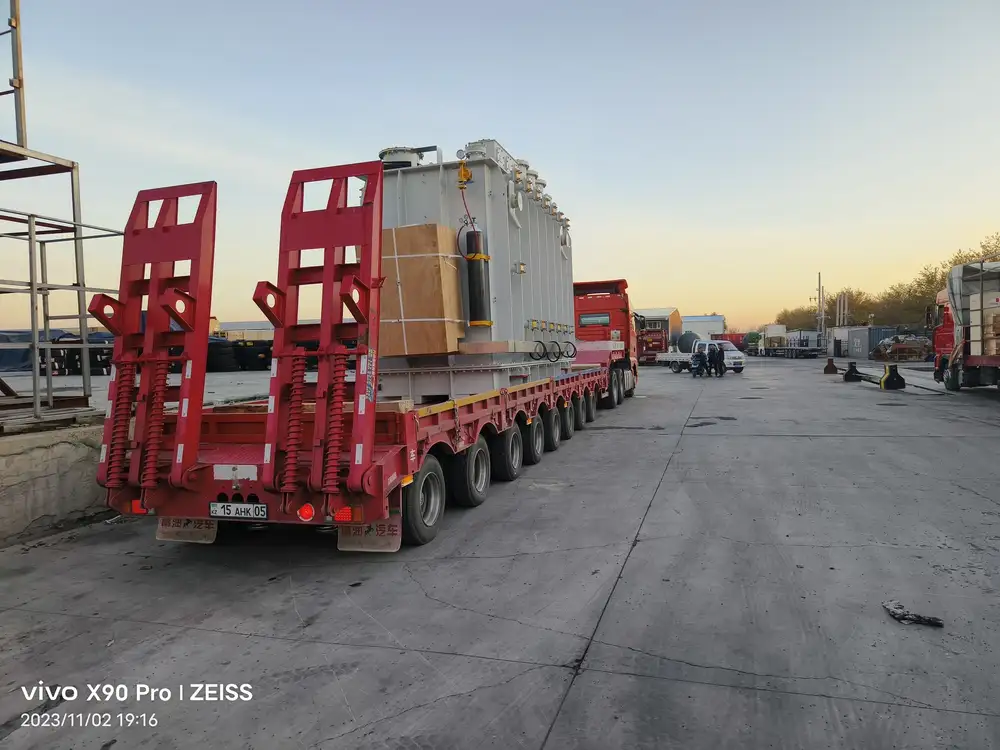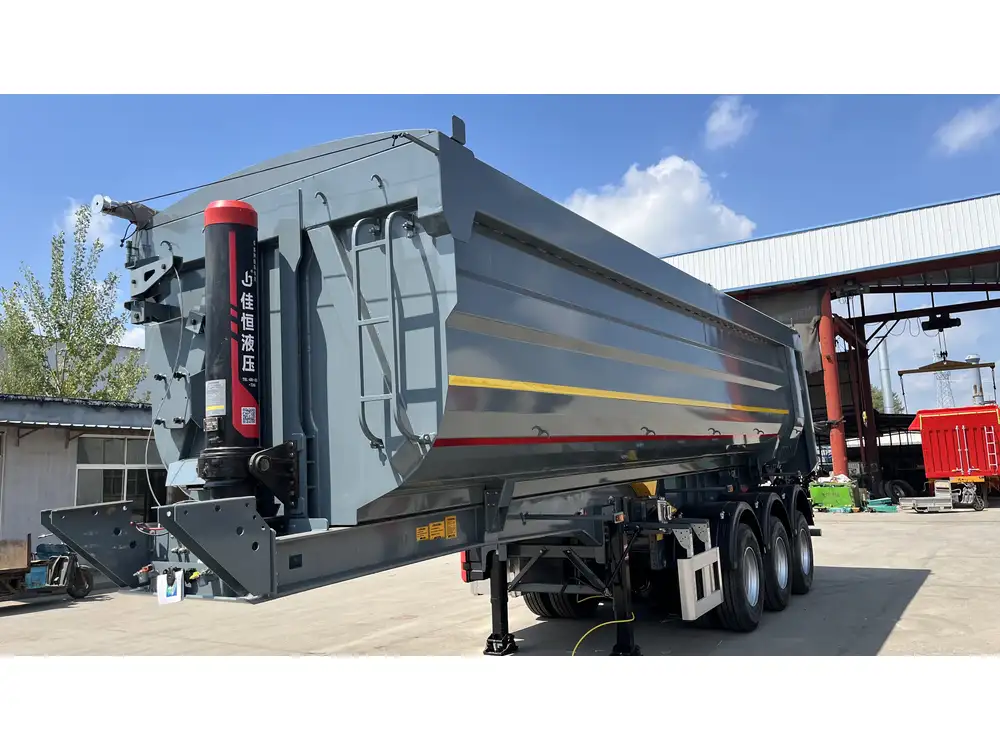Maintaining a semi-trailer is crucial for extending its lifespan and ensuring its efficiency on the road. One effective method to restore and maintain the appearance of a semi-trailer is through acid washing. This process not only cleans but also etches the surface, allowing for better paint adhesion and enhancing the overall aesthetic. In this detailed guide, we will explore the step-by-step process of acid washing a semi-trailer, discuss the necessary precautions, and highlight the benefits of this maintenance practice.
Understanding the Acid Wash Process
What is Acid Washing?
Acid washing involves the application of acidic solutions to thoroughly clean and prepare surfaces. It effectively removes oxidation, rust, and other impurities from metal surfaces, providing a clean slate for repainting or sealing. For semi-trailers, this can significantly improve their appearance and prevent deterioration.

Benefits of Acid Washing Semi Trailers
| Benefit | Description |
|---|---|
| Enhancement of Appearance | Restores the shine and finishes, making the trailer look new. |
| Improves Paint Adhesion | Creates a rough texture that helps paint stick effectively. |
| Prevents Corrosion | Eliminates rust and oxidation, prolonging the trailer’s life. |
| Increases Resale Value | A well-maintained trailer can fetch a higher price. |
Preparation Steps for Acid Washing
Before diving into the actual washing process, it is crucial to gather all necessary supplies and prepare the environment.
Essential Supplies
- Acidic Cleaning Solution: Common choices include phosphoric acid or muriatic acid. Be sure to consult the manufacturer for recommendations based on the trailer’s material.
- Protective Gear: Gloves, goggles, and a face mask are essential for safety when dealing with acids.
- Pressure Washer: A high-pressure washer will help apply the acidic solution evenly and rinse off contaminants.
- Scrub Brushes: Stiff-bristled brushes assist in scrubbing stubborn stains.
- Water: A consistent source of clean water for dilution and rinsing is essential.

Safety Precautions
- Work in a Well-Ventilated Area: This will help avoid inhalation of toxic fumes.
- Wear Appropriate Protective Gear: Acid can cause severe skin and eye irritation; protective gear is non-negotiable.
- Avoid Contact with Ground: Acid can damage concrete or asphalt; consider laying out plastic sheeting to catch runoff.
Step-by-Step Process of Acid Washing a Semi Trailer
Step 1: Initial Assessment
Before initiating the acid wash, perform a thorough inspection of the semi-trailer for areas needing special attention. Look for:
- Signs of heavy oxidation or rust
- Damaged paint spots that may require repair
- Integrity of the trailer structure

Step 2: Prep the Surface
- Remove Loose Dirt and Debris: Use a pressure washer to rinse the surface and eliminate loose dirt, dust, and debris.
- Inspect Seals and Joints: Check all seals and joints for any damage. Repair if necessary to avoid acid penetration.
Step 3: Dilute the Acid Solution
Follow the manufacturer’s instructions carefully to dilute the acidic cleaner. Typical dilution ratios may be:
| Acid Type | Dilution Ratio |
|---|---|
| Phosphoric Acid | 1 part acid to 3 parts water |
| Muriatic Acid | 1 part acid to 10 parts water |
Caution: Always add acid to water, not the other way around, to prevent violent reactions.
Step 4: Application of Acid Solution
- Start from the Top: Apply the acid solution starting from the top of the trailer and work your way down using a pressure washer.
- Use a Scrub Brush: For heavily stained areas, scrub with a stiff-bristled brush, emphasizing rust spots and oxidation.
- Monitor the Surface: Watch for reactions; the surface should begin to bubble as the acid works to remove impurities.

Step 5: Rinse Thoroughly
- Use a high-pressure washer to rinse off the acid solution thoroughly.
- Ensure all traces of acid are removed to prevent damage to the trailer’s metal surfaces.
- Rinse from the top down to prevent leftover acid from pooling.
Step 6: Neutralization
To neutralize any remaining acid, prepare a bi-carbonate soda solution (1 cup of baking soda in 5 gallons of water) and apply it uniformly over the trailer, especially in areas with concentrated acid exposure. After applying, rinse once more with fresh water.
Step 7: Drying
Allow the trailer to air dry completely. This may take a few hours, but it is crucial before applying any paint or protective coatings.

Step 8: Post-Wash Inspection
After drying, conduct a final inspection to identify any areas that may require additional attention. This is also the right time to touch up any paint blemishes.
Additional Considerations
Frequency of Acid Washing
- Operational Environment: Depending on whether your semi-trailer operates in humid coastal areas or dry dusty regions, you may need to wash it more or less frequently.
- Load Transported: Trailers frequently transporting corrosive materials should undergo acid washing more often.

Alternative Cleaning Methods
While acid washing is effective, consider these alternatives in specific situations:
- Power Washing with Detergents: For light cleanings, this might suffice without the harshness of acids.
- Sandblasting: In cases of severe rust and neglect, this may be required before resealing or repainting.
Typical Costs
The cost of acid washing can vary significantly based on the service provider, the size of the trailer, and the condition of the surface. Consider budgeting between $300 to $1,000 for a professional acid wash.
When to Seek Professional Help
- Extreme Rust Damage: If structural compromise is noted, external help may be necessary for adequate repairs.
- Limited Experience: For those unfamiliar with handling acids, hiring a professional service can avoid serious mishaps.

Conclusion
Acid washing a semi-trailer is an instrumental maintenance practice that enhances both aesthetics and lifespan. By understanding the process, preparing adequately, and applying the necessary safety precautions, we can ensure that our semi-trailers remain visually appealing and functionally sound. Regular acid washing, paired with diligent inspections and proactive maintenance, will keep our fleet operating at optimum performance.
Incorporating this guide into your maintenance protocol will not only keep your semi-trailer in top condition but will also increase its longevity and potentially save costs in the long run. Invest in your fleet – ensuring it remains a valuable asset in your transportation business.



